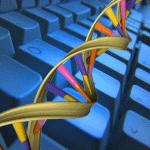Bioinformatics
|
15 june 2012 14:35:01 |
| Computational analysis of calcium signaling and membrane electrophysiology in cerebellar Purkinje neurons associated with ataxia (BMC Systems Biology) |
|
Tweet Background:
Mutations in the smooth endoplasmic reticulum (sER) calcium channel Inositol Trisphosphate Receptor type 1 (IP3R1) in humans with the motor function coordination disorders Spinocerebellar Ataxia Types 15 and 16 (SCA15/16) and in a corresponding mouse model, the IP3R1delta18/delta18 mice, lead to reduced IP3R1 levels. We posit that increasing IP3R1 sensitivity to IP3 in ataxias with reduced IP3R1 could restore normal calcium response. On the other hand, in mouse models of the human polyglutamine (polyQ) ataxias, SCA2, and SCA3, the primary finding appears to be hyperactive IP3R1-mediated calcium release. It has been suggested that the polyQ SCA1 mice may also show hyperactive IP3R1. Yet, SCA1 mice show downregulated gene expression of IP3R1, Homer, metabotropic glutamate receptor (mGluR), smooth endoplasmic reticulum Ca-ATP-ase (SERCA), calbindin, parvalbumin, and other calcium signaling proteins.
Results:
We create a computational model of pathological alterations in calcium signaling in cerebellar Purkinje neurons to investigate several forms of spinocerebellar ataxia associated with changes in the abundance, sensitivity, or activity of the calcium channel IP3R1. We find that increasing IP3R1 sensitivity to IP3 in computational models of SCA15/16 can restore normal calcium response if IP3R1 abundance is not too low. The studied range in IP3R1 levels reflects variability found in human and mouse ataxic models. Further, the required fold increases in sensitivity are within experimental ranges from experiments that use IP3R1 phosphorylation status to adjust its sensitivity to IP3. Results from our simulations of polyglutamine SCAs suggest that downregulation of some calcium signaling proteins may be partially compensatory. However, the downregulation of calcium buffer proteins observed in the SCA1 mice may contribute to pathology. Finally, our model suggests that the calcium-activated voltage-gated potassium channels may provide an important link between calcium metabolism and membrane potential in Purkinje cell function.
Conclusion:
Thus, we have established an initial platform for computational evaluation and prediction of ataxia pathophysiology. Specifically, the model has been used to investigate SCA15/16, SCA1, SCA2, and SCA3. Results suggest that experimental studies treating mouse models of any of these ataxias with appropriately chosen peptides resembling the C-terminal of IP3R1 could adjust receptor sensitivity, and thereby modulate calcium release and normalize IP3 response. In addition, the model supports the hypothesis of IP3R1 supersensitivity in SCA1. |
| 226 viewsCategory: Bioinformatics |
 The Role of Non-Native Interactions in the Folding of Knotted Proteins (PLoS Computational Biology) The Role of Non-Native Interactions in the Folding of Knotted Proteins (PLoS Computational Biology)Live sequence charts to model medical information (Theoretical Biology and Medical Modelling) 
|
| blog comments powered by Disqus |
MyJournals.org
The latest issues of all your favorite science journals on one page
The latest issues of all your favorite science journals on one page



